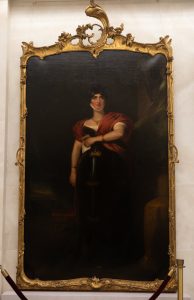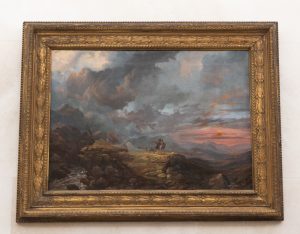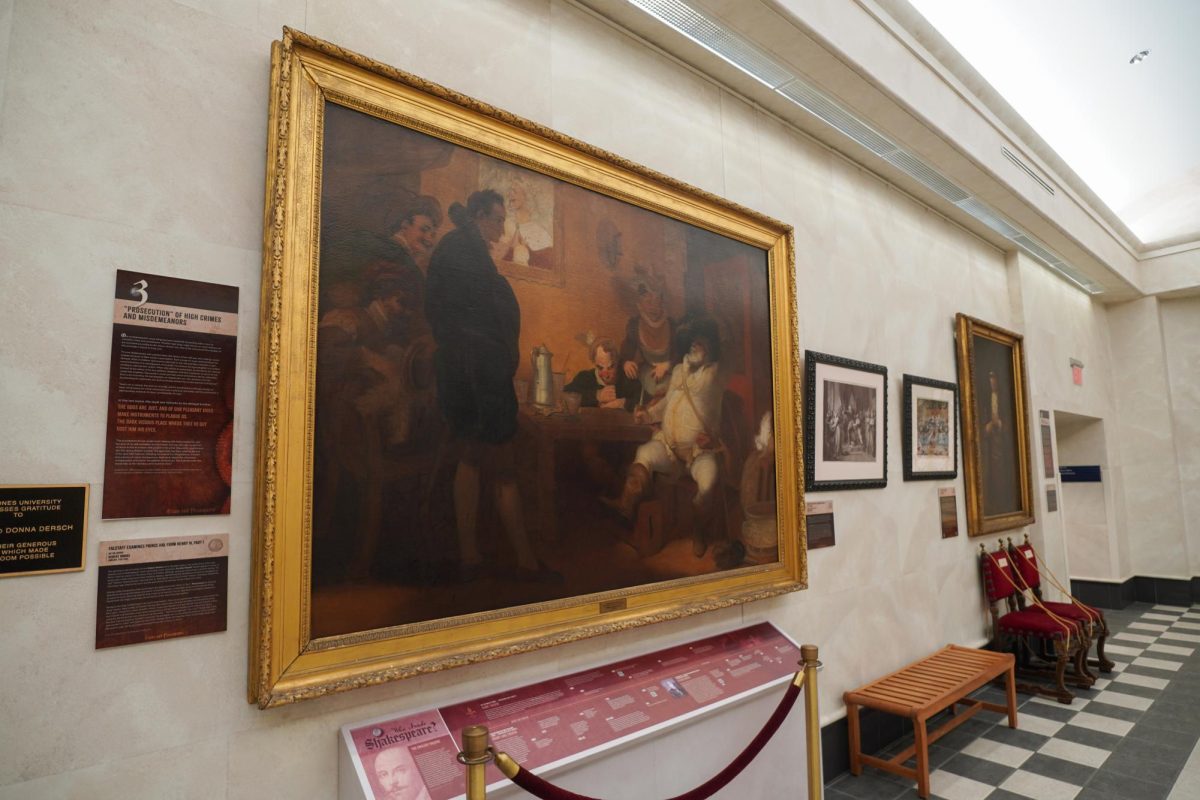On Jan. 15, The Museum and Gallery at Bob Jones University opened a new art exhibit featuring works about William Shakespeare. The exhibition is displayed right outside the music library, in the Gustafson Fine Arts Center Atrium. Extending a voice to universality, the collection highlights Shakespeare’s deep knowledge of human nature.

The various paintings and engravings depict characters from “Henry IV,” “King Lear,” “Richard III,” “Macbeth” and “As You Like It.” Numbered plaques guide students through these plays, informing of contextual details like media and general plot line. More importantly, each artwork mirrors humanity “[reminding] us of our place in the world and our potential for good – or evil,” as the main display mentions.
One side of the exhibit features the theme Crime and Punishment from stories of “King Lear” and “Richard III.” William Hogarth’s engraving of the famous actor, David Garrick, as Richard III reflects utter confusion and madness. The weighty consequences are evident by the terror on his face, while heavy symbolism litters the background of the piece, reminding the viewer of Richard’s illegitimate claim to the throne.
The theme of Man and Nature weaves together the displays on the opposite side of the atrium. Here the almost life-size portrait of Lady Macbeth captures the wickedness of the human heart. Nearby, the painting of Macbeth and the witches foreshadows calamity as dark clouds swirl over the small mountain party.

Mr. Dave Schwingle, the theatre department head, commented on Shakespeare’s importance, saying, “The truth and beauty of his plays are nourishing to the soul…he wrote so accurately about human nature as what we are like.”
Shakespeare’s characters rise above Danes and Britons and live today in the everyman.
“Read the text panels and think,” Mr. Schwingle encouraged visitors. “Take time and read.”
These stories powerfully convey both truth and beauty, forcing the viewer to reflect on the human condition. Shakespeare knew that despite cultural differences, mankind is the same. In “The Tempest” he wrote, “what’s past is prologue.”























































Julie Klapperich • Feb 15, 2025 at 3:42 pm
I enjoyed reading your article, Emily. I hope to see this exhibit the next time I am on campus.